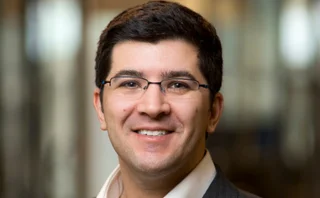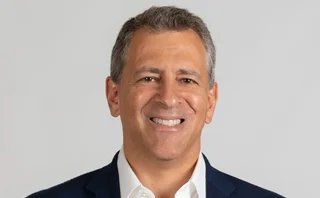
Commodities exchange of the year: Nodal Exchange
Energy Risk Awards 2019: Power volumes surge by 60% at US energy exchange

The winter of 2017–18 threw a mixed bag of weather at the US, with record-breaking snow recorded in some areas and the highest ever winter temperatures recorded elsewhere. Snow fell on the sunshine state of Florida, while New England sweltered in 27º Celsius heat in February, the highest February temperatures on record.
Despite this unusual weather leading to volatility in power prices, trading volumes at most major exchanges remained flat. The exception was Nodal Exchange. The Virginia-based firm saw a 60% jump in volumes in 2018 to hit a record of 1.039 billion megawatt hours (MWh) of power futures traded.
Nodal’s chief executive, Paul Cusenza, believes the increase in volume is due to clients seeking greater granularity in trading, which is offered by Nodal’s approach. “Nodal Exchange currently offers over 1,000 contracts on hundreds of unique locations, which provides the most effective basis risk management available to market participants,” he says.
“As the US experiences more extremes of temperature in the winter and electricity prices become more volatile, it’s becoming more important for firms to hedge. I have always characterised Nodal as being a risk management company but, in addition to our risk models and risk protection, we are the leading basis market in the US,” he adds.
Power in the US, unlike Europe where markets are national, is priced around regional hubs, meaning utilities that are active in a number of markets are subject to basis risk if power prices move in different directions in varied geographies.
Cusenza also believes Nodal Exchange’s approach to initial margin – which is based on an expected shortfall regime rather than the standard portfolio at risk or value-at-risk approaches used by other exchanges – contributes to its overall success.
The expected shortfall methodology deployed by Nodal’s clearing house, Nodal Clear, uses both recent portfolio returns as well as the portfolio’s potential returns during historical stress periods to generate a portfolio level initial margin that is appropriate to the risk in each participant’s portfolio. In all, the Nodal Clear expected shortfall model uses more than 1,000 return observations in its expected shortfall calculation for each portfolio. This model is calibrated to cover a one-day or two-day loss to a 99.7% confidence level.
“Nodal’s margin regime works exactly as you would want it to in terms of being a risk-based model. It naturally adjusts based on seasonality and other factors, and has been a great success story. That is why people put basis trades with us. Our volumes were up 60% on a flat market because our risk management, and particularly our margin regime, is better than our rivals.”
As the US experiences more extremes of temperature in the winter and electricity prices become more volatile, it’s becoming more important for firms to hedge
Paul Cusenza, Nodal Exchange
And the figures back Cusenza up. The chief executive says the firm didn’t add any more significant nodes to their platform in 2018, but says last year’s record-high volumes are due to greater awareness of the margin benefits from trading with Nodal. The exchange also beat its own monthly trading levels from August through to the end of the year. The exchange also lists a Henry Hub natural gas contract providing cross-margining benefits with participants’ power portfolios.
By the end of February 2019, Nodal had a market share of all cleared North American power futures contracts, measured by open interest, of 34%, the exchange says. The firm said in a statement that this was “a significantly better”, performance than that of its competitors’. This success extended into the current year, with Nodal hitting a new high in volumes of monthly power futures of 173 million MWh, and a notional value of $5.5 billion per side, in February 2019.
But, not satisfied with this level of success, Nodal set out to achieve even more, this time capitalising on the benefits of belonging to a larger organisation. In May 2018, the firm celebrated its one-year anniversary as part of the EEX Group, which in turn is part of the Deutsche Börse Group. In November last year, Nodal introduced a new high-tech trading platform based on Deutsche Börse’s T7 technology. Importantly, it allows participants to trade via any trading screen connected to Nodal’s T7.
As a result of implementing T7, Nodal Exchange was able to launch its first tranche of North American environmental contracts in November 2018, in cooperation with Chicago-based environmental trading house IncubEx. These include futures and options on 15 different emissions and renewables contracts across the US including California Carbon Allowances, Regional Greenhouse Gas Initiative Allowances and New Jersey Solar Renewable Energy Certificates. A volume of 6,750 lots was traded in these new products by year end and all settlements have so far proceeded smoothly, according to Cusenza.
Only users who have a paid subscription or are part of a corporate subscription are able to print or copy content.
To access these options, along with all other subscription benefits, please contact info@risk.net or view our subscription options here: http://subscriptions.risk.net/subscribe
You are currently unable to print this content. Please contact info@risk.net to find out more.
You are currently unable to copy this content. Please contact info@risk.net to find out more.
Copyright Infopro Digital Limited. All rights reserved.
As outlined in our terms and conditions, https://www.infopro-digital.com/terms-and-conditions/subscriptions/ (point 2.4), printing is limited to a single copy.
If you would like to purchase additional rights please email info@risk.net
Copyright Infopro Digital Limited. All rights reserved.
You may share this content using our article tools. As outlined in our terms and conditions, https://www.infopro-digital.com/terms-and-conditions/subscriptions/ (clause 2.4), an Authorised User may only make one copy of the materials for their own personal use. You must also comply with the restrictions in clause 2.5.
If you would like to purchase additional rights please email info@risk.net
More on Commodities
Energy Risk Asia Awards 2025: The winners
Winning firms showcase the value of prudent risk management amid challenging market conditions
Data and analytics firm of the year: LSEG Data & Analytics
Energy Risk Awards 2025: Firm’s vast datasets and unique analytics deliver actionable insights into energy transition trends
OTC trading platform of the year: AEGIS Markets
Energy Risk Awards 2025: Hedging platform enhances offering to support traders and dealers in unpredictable times
Electricity house of the year: Natixis CIB
Energy Risk Awards 2025: Bank launches raft of innovative deals across entire electricity supply chain
Voluntary carbon markets house of the year: SCB Environmental Markets
Energy Risk Awards 2025: Environmental specialist amplifies its commitment to the VCM
Sustainable fuels house of the year: Anew Climate
Energy Risk awards 2025: Environmental firm guides clients through regulatory flux
Weather house of the year: Parameter Climate
Energy Risk Awards 2025: Advisory firm takes unique approach to scale weather derivatives markets
Hedging advisory firm of the year: AEGIS Hedging
Energy Risk Awards 2025: Advisory firm’s advanced tech offers clients enhanced clarity in volatile times







